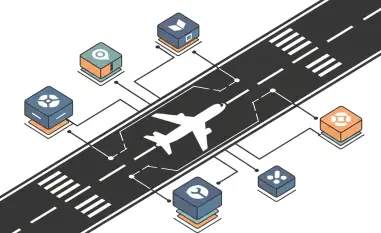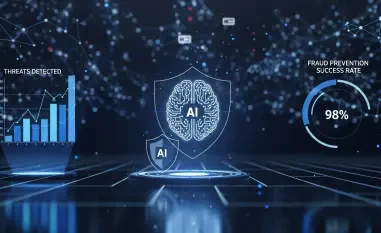Malik Haidar is renowned for his expertise in cybersecurity, specifically his skill in thwarting hackers within large corporations. His unique approach emphasizes merging business insights with cybersecurity strategies, making him a sought-after authority on AI ethics and risk management. In this interview, Malik dives into the ethical conundrums posed by AI in today’s business landscape, elucidating the pervasive issue of digital discrimination, stressing the importance of AI validation, and discussing how businesses can tackle AI’s ethical challenges.
What are some of the main ethical dilemmas posed by AI in business today?
AI in business has undeniably transformed efficiency and decision-making processes. However, this comes with ethical dilemmas such as privacy infringement, biased algorithms, and digital discrimination. These issues arise because AI systems can often operate as “black boxes,” making decisions that significantly impact individuals without transparency. The main challenge lies in ensuring these systems are both beneficial and equitable.
How does digital discrimination occur within AI algorithms, and what are its potential consequences?
Digital discrimination stems from biases ingrained in the algorithms, often due to flawed or incomplete training data. This can lead to AI systems perpetuating existing societal inequalities. For instance, when AI systems are applied beyond their designed parameters, the lack of appropriate oversight can result in incorrect predictions and biased outcomes. If left unchecked, this may cause unfair treatment and lack of access to certain groups, which is particularly concerning in sectors like finance, employment, and law enforcement.
What role does training data play in perpetuating bias and discrimination in AI systems?
Training data is foundational to AI systems; it influences how these systems learn and make decisions. Biases in training data, such as underrepresentation of specific demographics or historical inaccuracies, can perpetuate stereotypes and unfair treatment. It’s crucial to curate diverse and balanced datasets to mitigate these risks. Otherwise, AI systems risk learning and amplifying these biases, leading to widespread discrimination.
Can you provide examples of how biases in AI systems manifest in real-world applications?
In practice, AI biases can manifest in various ways, such as in recruitment algorithms that favor certain demographics over others, or in facial recognition technologies that struggle with accuracy across different skin tones. These manifestations highlight a critical need for inclusive data practices and robust validation processes to ensure AI systems make fair and equitable decisions.
How can businesses identify and measure instances of bias within their AI systems?
To identify bias, businesses can implement metrics that focus specifically on fairness and equity outcomes. This involves regularly auditing AI outputs and employing transparency tools to track decision-making processes. A systematic approach to measuring bias can help businesses adjust their algorithms to avoid perpetuating unfair outcomes.
Why is validation of AI performance important, and what risks are associated with not validating AI systems?
Validation ensures that AI systems operate as intended across diverse contexts. Without it, AI systems may make decisions based on untested assumptions, leading to potentially harmful consequences. Lack of validation undercuts both the ethical integrity and functional reliability of AI, making systems unpredictable and, at times, dangerous.
What challenges do companies face when assessing AI systems for reliability, fairness, and safety?
One of the largest challenges is the complexity and opacity of AI systems, making it difficult to interpret how decisions are made. Ensuring transparency and clear evaluation criteria is essential. Additionally, businesses must contend with the dynamic nature of AI, which can evolve based on new data inputs, potentially altering its fairness and reliability over time.
How could AI be used as a weapon in cybersecurity, and what are the potential implications of this?
AI as a cybersecurity weapon represents a formidable threat, capable of executing complex attacks with minimal human intervention. This raises the stakes for businesses to develop stronger defenses and anticipate new AI-driven attack vectors, which traditional cybersecurity measures might not withstand. It necessitates proactive strategies to counteract such threats.
What steps can businesses take to tackle the ethical risks associated with AI in their operations?
Businesses should prioritize ethical frameworks that incorporate robust bias detection, validation procedures, and human oversight. Additionally, ongoing employee education and the establishment of cross-functional ethics teams can foster a culture of accountability and transparency in AI operations.
How can metrics be used to ensure AI systems are trustworthy, fair, and accountable?
By employing metrics that evaluate algorithmic decision-making based on fairness, transparency, and accountability standards, businesses can systematically measure AI impact. These metrics offer quantifiable insights that support modifications to reduce bias and enhance trustworthiness.
What approaches can businesses adopt to better understand and mitigate AI bias?
Businesses can start by conducting thorough analyses of existing biases within their data and algorithms. Techniques like re-weighting data inputs and adversarial debiasing can help correct these biases. Ensuring diverse perspectives in AI design and deployment teams is also critical for comprehensive bias mitigation.
How can human oversight be integrated into AI systems to enhance accountability and minimize harm?
Integrating human oversight in AI operations involves creating processes where humans can intervene in AI decisions. This real-time interaction allows for adjustments when AI behavior diverges from ethical norms, thus minimizing potential harm and maintaining system accountability.
What advantages does a human-in-the-loop system offer compared to fully autonomous AI systems?
Human-in-the-loop systems provide critical safeguards by incorporating human judgment and context into AI operations. This interactivity ensures AI decisions remain aligned with societal values and allows for direct accountability, reducing the risk of ethical violations.
In what ways can employees contribute to responsible AI usage in an organization?
Employees who are educated in AI ethics act as critical evaluators of AI systems. They can identify potential biases and advocate for ethical practices. Empowering them with the necessary tools and knowledge facilitates their ability to support responsible AI deployment.
How important is it for organizations to establish a culture of AI responsibility, and how can they achieve it?
Fostering a culture of AI responsibility is vital for long-term ethical compliance and innovation. Organizations can achieve this by integrating AI ethics into core values, providing comprehensive training, and promoting an environment where transparency is encouraged and employees feel accountable for AI outcomes.
What strategies can organizations use to promote AI literacy and ethical awareness among their employees?
Organizations can initiate ongoing educational programs focused on AI ethics and real-world implications, host workshops and seminars, and provide resources for self-learning. Encouraging dialogue and collaboration among employees on these topics furthers internal understanding and accountability.
Describe some methods such as re-weighting and adversarial debiasing that can help eliminate biases in AI models.
Re-weighting involves adjusting the importance of weighted data points to reduce bias during model training. Adversarial debiasing, on the other hand, involves training models to perform well on primary tasks while minimizing bias through adversarial techniques that promote fairness.
Why is it crucial to include marginalized groups in discussions about ethical AI deployment?
Inclusion of marginalized groups ensures that diverse perspectives are considered, which is crucial for identifying biases that others may overlook. Their input helps create systems that are equitable and just, reflecting a wide spectrum of experiences and needs.
How can businesses turn AI from an ethical risk into a valuable asset?
By embedding ethical considerations into all phases of AI development and deployment, businesses can transform AI into a force for good. This involves conscientiously designing AI systems with fairness and inclusivity in mind, supported by a solid governance framework that emphasizes responsibility.
What is your forecast for the future of AI in terms of ethical development and deployment?
Looking forward, I foresee a stronger emphasis on ethical AI development, driven by growing awareness and regulatory pressures. Organizations adopting proactive measures in AI ethics will not only mitigate risks but also unlock immense potential, positioning AI as an invaluable asset in responsible innovation.













